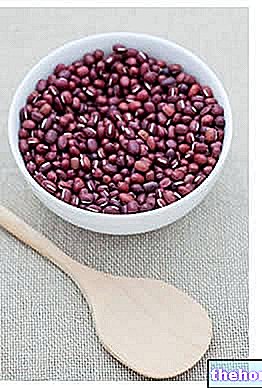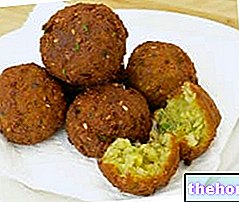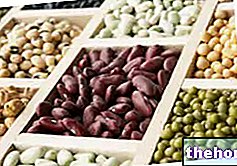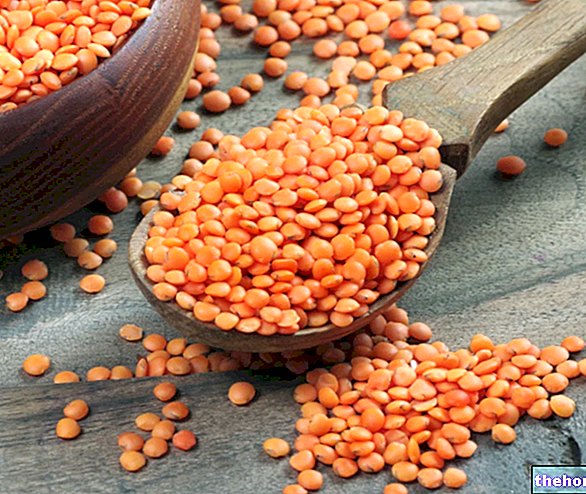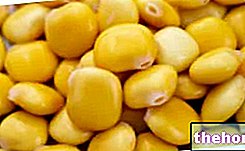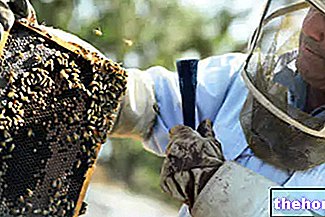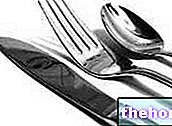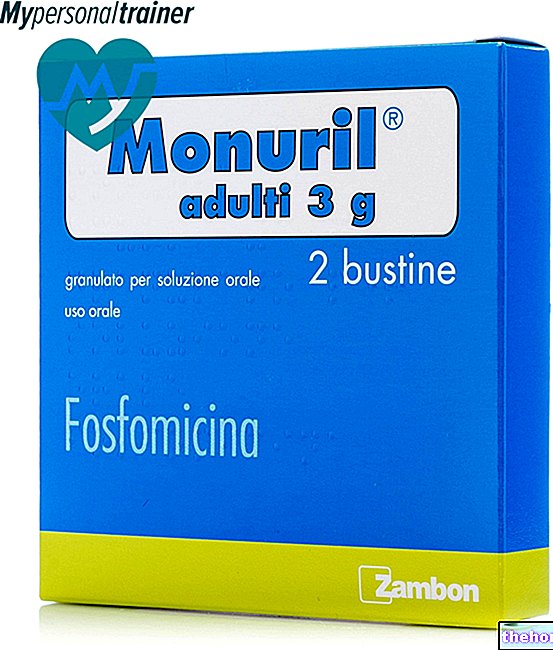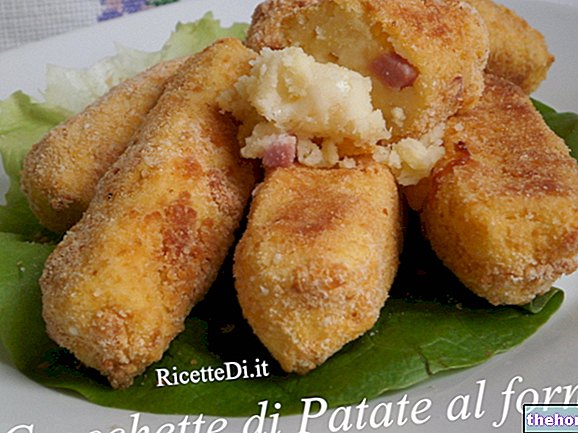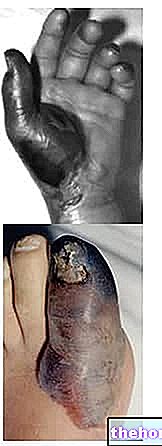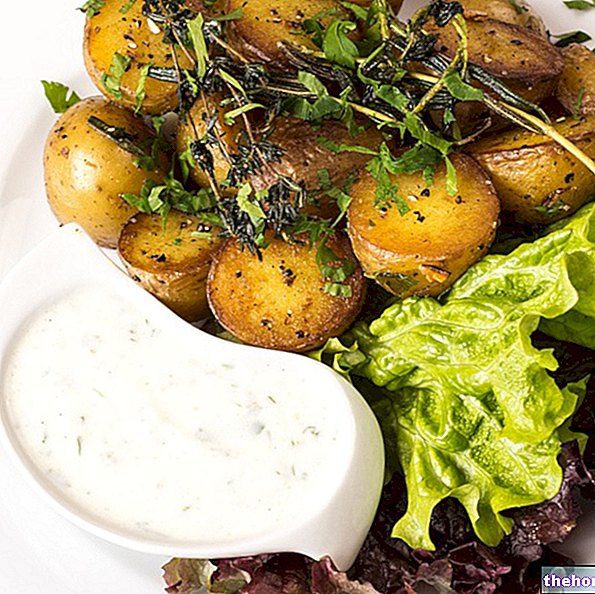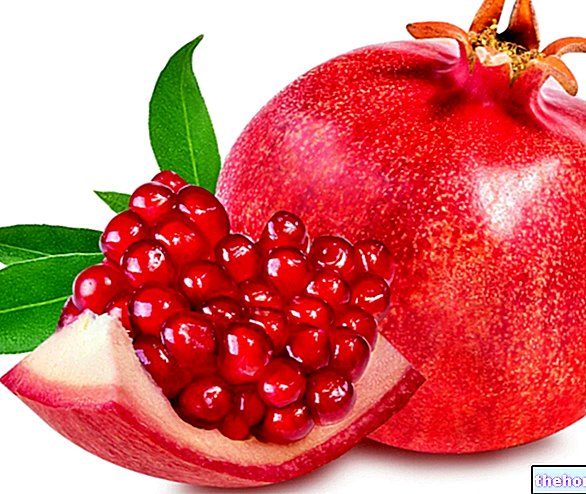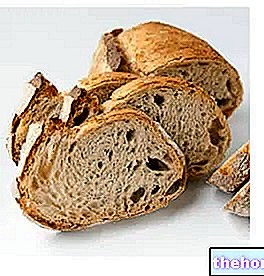What are?
Cicerchie are the seeds of Lathyrus sativus, herbaceous plant belonging to the Fabaceae family (legumes).

Cicerchia is a particularly important crop in areas prone to an arid climate and with a scarcely fertile soil; ideal for areas prone to famine, the cicerchia plays the role of a "safe crop", as it always guarantees safe and abundant yields.
However, pea seeds contain a neurotoxin that can cause neuro-degenerative disease, which is only dangerous if consumed for a long period of time.
Diffusion in Italy
In Italy, cicerchia seeds are sold mainly in the traditional markets of the city of Florence which, as it is known, represent a real tourist attraction. The consumption of this legume is however limited to some areas of central-southern Italy (especially Tuscany , Lazio, Molise, Puglia, Marche and Umbria), where some varieties have been recognized as a traditional Italian food product, probably the best known is the Cicerchia dell "Alta Murgia.
To date, the Italian consumption of cicerchie is constantly decreasing but, with the advent of modern philosophical health currents (macrobiotic, vegetarianism, etc.), it cannot be excluded that they may return to occupy an important role in the nutrition of the Bel Paese.
Cicerchie can be eaten like most other legumes, then stewed or boiled and drained. The most common recipe is probably the “Zuppa Fitta di Cicerchie with Rosemary Toasted Bread”; popular are also dishes such as "Pasta and Cicerchie", "Fish and Cicerchie", "Cicerchie and Cavoli" etc.
The most common commercial form in Italy for cicerchie is the dry one.

Cicerchie and Gachas Manchegas flour
A certain type of flour is also obtained from the cicerchie, known above all by the Spanish name of the legume (almorta); not surprisingly, this flour is the main ingredient of “gachas manchegas” or “gachas de almorta”, a traditional recipe of the cuisine of La Mancha (Spain).
Consumed mainly during the winter months, the Machengo dish is prepared in many variations, both within the regional and national territory.
Gachas manchegas or gachas de almorta should be eaten directly in the cooking pan, freshly taken off the heat, using a spoon or a simple slice of bread (as this is a soupy recipe).
Cicerchie flour is extremely difficult to find; in fact, outside of Castilla-La Mancha, it has no significant trade. Sometimes, grass pea flour is available in mixtures with other legumes and / or cereals. In fact, the only relatively common grass pea flour is that cut with wheat dust, in an attempt to moderate the typical neuro-toxicity of this legume. .
Crispy Cicerchie and Daikon Soup
Problems with playing the video? Reload the video from youtube.
- Go to the Video Page
- Go to the Video Recipes Section
- Watch the video on youtube
Cicerchie, ODAP and Neurolatirism
Like many other legumes, the grass pea plant produces seeds with a high protein content.
However, as anticipated, these also contain a certain (variable) amount of a neurotoxic amino acid, called β-N-Oxalyl-L-α, β-diaminopropionic acid (oxalyldiaminopropionic acid), abbreviated ODAP or BOAA. This amino acid, as some recent publications suggest, acts as an activator towards enzymes protein kinase C (PKC) of calcium dependent type.
ODAP is considered to be the cause of neurolatyrism, a neurodegenerative disease that causes emaciation of the buttocks (weight loss similar to a real emptying of muscle mass) and paralysis of the lower limbs of the body.
In the past, after long famines, the disease has occurred in Europe (especially France, Spain and Germany), North Africa and South Asia. On the other hand, it is still prevalent in Eritrea, Ethiopia and Afghanistan (in the panhandle), since the peas are still the sole or main nutritional source of these populations.
Research has shown that ODAP concentration increases in plants grown under stressful conditions, aggravating the problem.
To date, botanical projects are underway to produce varieties of grass peas that produce less ODAP. However, a fairly recent study on legumes highlights that ONLY excessive and prolonged consumption can become really harmful; alternating the grass peas with other foods, the unfortunate eventuality is therefore easily averted. Eaten whole (not as flour) and in limited quantities, the cicerchie are quite harmless.
In their defense, cicerchie are the only known food source of L-homoarginine, more predisposed amino acid than arginine for the production of nitric oxide (NO).
In the light of the latest discoveries, grass peas should no longer be branded as a harmful legume, but considered a product whose exclusive and permanent use in the diet is not recommended.
Other Names of Cicerchie
Cicerchie are also known as grass pea in English, blue swet pea, chickling vetch, indian pea, indian vetch, white vetch, almorta or alverjón (in Spanish ), guixa (in Catalonia), Jari Grah (in Croatian), koçkulla (in Albanian), chícharos (in Portuguese), sebere (in Eritrea), guaya (in Ethiopian), turmos (in Arabic) and khesari (in Bangladesh and India).
Other Foods - Legumes Peanuts Chickpeas and Chickpea Flour Cicerchie Beans Azuki Beans Green Beans Broad Beans Falafel Chickpea Flour Bean Flour Bean Flour Lentil Flour Pea Flour Soy Flour Legumes Lentils Lupins Peas Soy Jackdaws Tempeh Tofu Yogurt ARTICLES Soy OTHER Categories Alcoholics Meat Cereals and derivatives Sweeteners Sweets Offal Fruit Dried fruit Milk and derivatives Legumes Oils and fats Fish and fishery products Salami Spices Vegetables Health recipes Appetizers Bread, Pizza and Brioche First courses Second courses Vegetables and Salads Sweets and Desserts Ice creams and sorbets Syrups, Liqueurs and grappas Basic Preparations ---- In the Kitchen with Leftovers Carnival Recipes Christmas Recipes Diet Recipes Light Recipes Women's Day, Mum, Dad Functional Recipes International Recipes Easter Recipes Recipes for Celiacs Recipes for Diabetics Recipes for Holidays Recipes for San Valentino Recipes for Vegetarians Recipes p roteiche Regional Recipes Vegan Recipes

